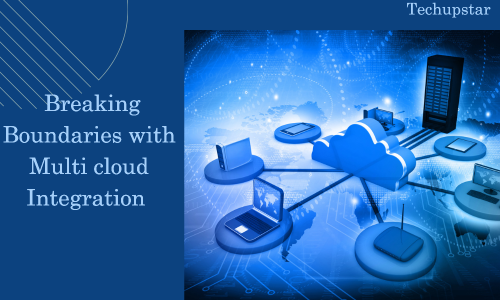The twenty first century is so filled with so many digital advancements, businesses need to be able to adapt quickly to changes in the market. This requires a lot of flexibility and agility, which is why many businesses are turning to multi cloud integration.
What Is Multi Cloud Integration
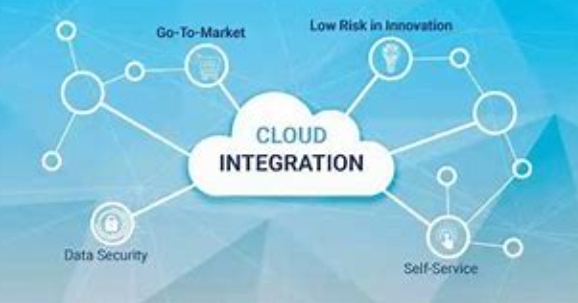
Multi cloud integration is defined as the process of connecting multiple cloud providers and services so that they are able to work together easily. This on the other hand gives businesses the ability to choose the most suitable cloud provider for each specific need, while also minimizing vendor lock-in.
Benefits Of Multi Cloud Integration
There are several benefits of multi cloud integration, which are as follows:
- The increased in flexibility and agility: With the use of multi cloud integration, businesses can easily switch between cloud providers or services as needed. This gives them the ease to prompt response to changes in the market.
- Reduced vendor lock-in: When businesses are encaged into a single cloud provider, they are at the mercy of the provider. If the provider raises prices or changes its terms of service, the business will then have little recourse. Multi cloud integration as well helps to reduce vendor lock-in by giving businesses the option to switch to different providers if need be.
- Improved disaster recovery: In the event of a disaster, multi-cloud integration can help businesses to keep their applications and data running. By having data and applications stored in multiple clouds, businesses can ensure that they have a backup plan in case of a problem with one cloud provider.
- Increased scalability: Multi cloud integration can also help businesses to scale up their applications and services more easily. By using multiple cloud providers, businesses can add more capacity as needed without having to worry about hitting capacity limits with a single provider.
- Improved performance: Multi cloud integration can also help to improve the performance of applications and services. By distributing traffic across multiple clouds, businesses can minimize latency and as well improve overall performance.
The Challenges of Multi Cloud Integration
Here are some of the challenges with multi cloud Integration that businesses need to be aware of. These challenges are as follows:
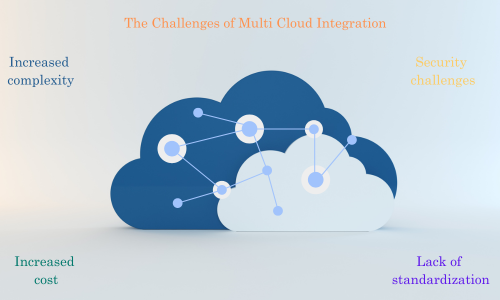
- Increased complexity: Multi cloud integration can be complex in terms of management. Businesses need to have a deep clear understanding of their primary needs and requirements before they start integrating several cloud providers.
- Increased cost: Multi cloud integration can be very exorbitant than using a single cloud provider. Businesses need to factor in the cost of managing multiple cloud providers and services when making their decision.
- Security challenges: Multi cloud integration can also increase the security risks for businesses. Businesses are meant to implement strong security controls in other to protect their data and applications.
- Lack of standardization: There’s actually no single standard for multi cloud integration. This might make it challenging to find solutions that work with all cloud providers.
Best Practices for Multi Cloud Integration
Notwithstanding the challenges, multi cloud integration can be a very valuable tool for businesses. Here are some of the best practices for multi cloud integration:
- Choosing the right cloud providers: When choosing a desired cloud provider, consider your specific needs and requirements. Some factors that are considered include the type of applications you want to run, the amount of data you need to store, and as well your budget.
- Using a common integration platform: Common integration platform can also help to simplify the integration process and reduce costs. There are a number of different integration platforms available, so you need to choose one that meets your specific needs.
- Implementing security controls: Security is a very essential concern with multi cloud integration. You should implement strong security controls to protect your data and applications.
- Monitor and manage your environment: It is very good to monitor and manage your multi cloud environment to ensure that it is running smoothly. This will help you to identify and also address any potential problems.
The Future of Multi Cloud Integration
Multi cloud integration is becoming very popular as businesses are eagerly looking for ways to improve their flexibility, agility, and security. In the near future, we can expect to see even more businesses adopting multi cloud integration.
If you are also considering multi cloud integration for your business, there are a number of resources available to help you get started.You can also find information on cloud providers, integration platforms, and security controls. There are also a good number of organizations that can provide guidance and support
What Are The Different Types of Multi Cloud Integration?
There are mainly two types of multi cloud integration:
- Hybrid cloud integration: This process involves using a combination of on-premises and as well cloud based resources.
- Multi-cloud integration: This process involves using several cloud providers.
What Are The Tools And Technologies For Multi Cloud Integration?
There are a good number of tools and technologies available for multi cloud integration. Some of the most popular tools are as follows:
- Cloud Orchestration Tools: These tools help in automating the process of managing multiple cloud providers.
- Cloud Management Platforms: These particular platforms provide a single pane of glass for managing several cloud providers.
- API Gateways: These gateways help in connecting different cloud services and applications.
- Identity and Access Management (IAM) Tools: These tools help to manage the user access to cloud resources.
What Are The Future Trends In Multi Cloud Integration?
The future of multi cloud integration is possibly to be driven by the following trends:
- The increase in adoption of hybrid cloud and multi cloud architectures.
- The development of new tools and technologies to simplify the management of multi cloud environments.
- The growing relevance of security in multi cloud environments.
What Are The Risks Of Multi Cloud Integration?
Some of the major risks of multi cloud integration include:
- Increased complexity: Multi cloud integration can be complex to manage.
- Increased cost: Multi cloud integration can be more expensive than using a single cloud provider.
Why Is Hybrid Multi Cloud

Hybrid multi cloud refers to a cloud computing strategy that involves a combination using multiple public cloud providers and private cloud infrastructure. The idea behind this approach is to leverage the capacity of different cloud providers while maintaining some control over sensitive data and applications in a private cloud environment.
There are different reasons why organizations might choose a hybrid multi cloud strategy:
- Avoiding Vendor Lock-In: By distributing of workloads across multiple cloud providers, organizations can minimize the risk of being tied to a single vendor. This also allows them to take advantage of competitive pricing, and better services, or avoid potential service disruptions or outages from a single provider.
- Flexibility and Scalability: Different cloud service providers may excel in specific areas or offer unique services. A hybrid multi cloud approach enables organizations to pick and choose the best services from each provider to suit their specific needs, which can lead to increased flexibility and scalability.
- Risk Mitigation: Relying solely on one single cloud provider can expose organizations to risks such as data breaches or service outages. By distributing resources across multiple providers, the impact of any individual provider’s issues is mitigated, enhancing overall system resilience.
- Regulatory Compliance: Certain industries and regions have specific data residency and regulatory requirements. A hybrid multi cloud approach allows organizations to keep sensitive data within private cloud infrastructure to comply with regulations while still utilizing public cloud resources for less sensitive operations.
- Performance Optimization: Several cloud providers may have data centers in various geographic locations. With a hybrid multi cloud setup, organizations can place workloads closer to their users, reducing latency and improving performance.
- Cost Optimization: Not all cloud services are priced the same way, and the costs of running certain workloads can vary between providers. Organizations can optimize costs by using the most cost-effective provider for each workload.
- Existing Infrastructure: Some organizations may have already invested heavily in on-premises private cloud infrastructure. A hybrid multi cloud approach allows them to integrate their existing infrastructure with public cloud services seamlessly.
It’s important to note that managing a hybrid multi cloud environment can be very complex, requiring proper planning, integration, and management tools to ensure security, compliance, and efficient resource utilization. As technology is on the rise, newer considerations and challenges may arise for hybrid multi cloud strategies beyond the information available up to September 2026
What Is Multi Cloud Computing?

Multi cloud computing is a cloud computing method in which an organization uses services and resources from multiple cloud providers, rather than relying on a single cloud service provider. This approach allows businesses to distribute their workloads, applications, and data across different cloud environments, taking advantage of the energy and capabilities offered by each provider.
In a multi cloud environment, an organization might use a combination of public cloud providers (such as Amazon Web Services, Microsoft Azure, Google Cloud Platform, etc.) And private cloud infrastructure, which could be hosted on-premises or in a dedicated data center. The key feature of multi cloud computing is the use of multiple cloud platforms from different vendors.
Benefits Of Multi Cloud Computing:
- Avoiding Vendor Lock-In: By distributing of workloads across multiple cloud providers, organizations can minimize the risk of being tied to a single vendor. This also allows them to take advantage of competitive pricing, and better services, or avoid potential service disruptions or outages from a single provider.
- Flexibility and Scalability: Different cloud service providers may excel in specific areas or offer unique services. A hybrid multi cloud approach enables organizations to pick and choose the best services from each provider to suit their specific needs, which can lead to increased flexibility and scalability.
- Risk Mitigation: Relying solely on one single cloud provider can expose organizations to risks such as data breaches or service outages. By distributing resources across multiple providers, the impact of any individual provider’s issues is mitigated, enhancing overall system resilience.
- Regulatory Compliance: Certain industries and regions have specific data residency and regulatory requirements. A hybrid multi cloud approach allows organizations to keep sensitive data within private cloud infrastructure to comply with regulations while still utilizing public cloud resources for less sensitive operations.
- Performance Optimization: Several cloud providers may have data centers in various geographic locations. With a hybrid multi cloud setup, organizations can place workloads closer to their users, reducing latency and improving performance.
- Cost Optimization: Not all cloud services are priced the same way, and the costs of running certain workloads can vary between providers. Organizations can optimize costs by using the most cost-effective provider for each workload.
- Existing Infrastructure: Some organizations may have already invested heavily in on-premises private cloud infrastructure. A hybrid multi cloud approach allows them to integrate their existing infrastructure with public cloud services seamlessly.
Challenges Of Multi Cloud Computing:
- Complexity: Managing multiple cloud providers can introduce complexity in terms of architecture, integration, and governance.
- Data and Application Interoperability: Ensuring seamless data and application interoperability between different cloud platforms can be challenging.
- Security and Compliance: Each cloud provider may have different security measures and compliance standards, necessitating careful coordination and management.
- Vendor Management: Dealing with multiple vendors requires efficient vendor management practices.
- Skill Requirements: Managing a multi-cloud environment demands skilled IT professionals with expertise in various cloud platforms.
The abridgment of this is that multi cloud computing offers organizations more flexibility, resilience, and the ability to optimize cloud resources, but it requires careful planning, management, and coordination in other to realize its benefits effectively.
Multi Cloud Integration Pattern

The multi cloud integration patterns refer to the various approaches and strategies deployed for connecting and integrating several cloud services, applications, and data across different cloud providers. These patterns are designed to address the challenges and complexities that arise in multi cloud infrastructure and enable seamless communication and data flow between different cloud platforms. Here are some of the common multi cloud integration patterns:
- Cloud-to-Cloud Communication: This process pattern involves direct communication between cloud services or applications hosted on different cloud providers. It most times uses APIs (Application Programming Interfaces) provided by the cloud vendors to facilitate data exchange and interaction.
- Hub-and-Spoke Model: In this particular pattern, a central hub acts as an intermediary between several cloud services. Each cloud service communicates with the hub, which then routes the data or requests to the appropriate destination. This approach simplifies point-to-point integrations and provides a centralized control point for managing communication.
- Message Bus / Event-Driven Architecture: A message bus or event-driven architecture allows cloud services to publish and subscribe to events or messages. When one cloud service generates an event, other services that are interested in that event can react accordingly. This pattern also promotes decoupling between services and supports asynchronous communication.
- API Gateway: An API gateway serves as an entry point for external requests and can consolidate API calls to different cloud providers. It helps manage authentication, rate limiting, caching, and other cross-cutting concerns in a multi cloud environment.
- Data Replication / Data Sync: Data replication patterns involve synchronizing data between different cloud databases or storage services. This also ensures that data is consistent across cloud providers and accessible from any location.
- Hybrid Identity and Access Management (IAM): The IAM integration patterns focus more on managing user access, authentication, and authorization across several cloud service providers and on-premises systems. It also ensures consistent and secure access control for applications and services.
- Cloud Bursting: This is a scaling pattern that allows an application to scale out from a private cloud or on-premises infrastructure to a public cloud when additional resources are needed. This pattern enables organizations to handle peak loads efficiently.
- Disaster Recovery and Backup: This pattern involves replicating data and applications to a secondary cloud provider for disaster recovery and backup purposes. In case of anyv failure or data loss in one cloud, services can quickly switch to the secondary cloud for continuity.
- Service Mesh: This is a dedicated infrastructure strand that manages communication between microservices. It provides features like service discovery, load balancing, encryption, and observability, which are very essential in a multi cloud microservices environment.
- Federation and Interoperability: This focuses on establishing interoperability between several cloud platforms, allowing seamless communication and data exchange between different providers.
It’s very important to note that the choice of integration patterns solely depends on the specific requirements, infrastructure, and technologies used in the multi cloud environment. Proper planning, architectural design, and implementation are very essential for successful multi cloud integration.
Multi Cloud Support
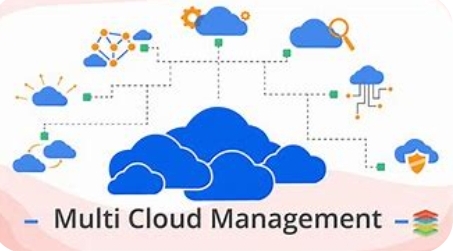
Multi cloud support is defined as the capability of software applications, services, or platforms to perform seamlessly across several cloud service providers. When an application or system is said to have multi cloud aid, it means that it can be deployed and as well run on different cloud environments without requiring significant modifications or reform for each cloud provider.
The main idea behind multi cloud this aid is to provide flexibility and avoid vendor lock-in. By the multi cloud being able to run on multiple cloud platforms, organizations can take advantage of the unique features, services, and pricing models offered by several cloud providers. This validates that the organization is not depending on a single service provider and can choose the best cloud service for each specific use case or workload.
Here are some of the characteristics of multi cloud support which include:
- Compatibility: The application or service is designed In such a way that it works with the APIs and services provided by multiple cloud service providers, ensuring that it can run seamlessly on any supported cloud platform.
- Abstraction of Cloud-specific Details: Multi cloud support always involves abstracting cloud specific details and using suitable interfaces, thereby allowing the application to be more portable and easier to deploy across different cloud environments.
- Resource Management: The application can efficiently manage and utilize resources across several clouds, optimizing performance and cost for each provider.
- Consistent Management and Monitoring: Multi cloud support includes constant management and monitoring capabilities, that are suitable to enable organizations to oversee and control resources regardless of the underlying cloud infrastructure.
- Load Balancing and Failover: Applications with multi cloud support can leverage load balancing and failover mechanisms across different cloud service providers, ensuring high availability and resilience.
- Data Synchronization and Replication: Data synchronization and replication, These features may be included to ensure data consistency across multiple cloud environments.
Having multi cloud support is very important for large enterprises or organizations with complex Information technology (IT) infrastructures. This allows them to diversify their cloud strategy, improve reliability, and as well optimize costs by selecting the most appropriate cloud service provider for each aspect of their operations.
Nevertheless, developing and maintaining applications with robust multi cloud support can be challenging and requires careful planning and architectural considerations. Standardization, modularity, and adherence to industry best practices are very crucial to achieving a successful multi cloud operation. In addition, tools and frameworks that facilitate multi cloud management and deployment can be very beneficial in easing the complexities associated with supporting multiple cloud service providers.
Multi Cloud Integration Platforms
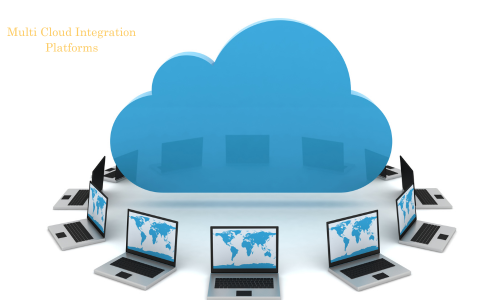
Multi cloud integration platforms are software services designed to facilitate the seamless integration and management of applications, data, and services across several cloud providers. These platforms aim at simplifying the complexities associated with multi cloud environments, thereby providing a unified and centralized approach to handle integration, security, monitoring, and management tasks. Here are a list of some popular multi cloud integration platforms:
- IBM Cloud Pak for Integration: This is a comprehensive integration platform that assists multi cloud and hybrid cloud environments. It offers a very wide range of integration capabilities, including application integration, data integration, API management, event-driven integration, and more.
- MuleSoft Anypoint Platform: This is a leading integration platform that enables organizations to connect applications, data, and devices across cloud and on-premises environments. It also provides API management, data integration, and application integration capabilities to support multi cloud deployments.
- Dell Boomi: The dell boomi is a cloud based integration platform that allows organizations to integrate applications and data across cloud and on-premises systems. It supports various integration patterns, including API management, data mapping, and workflow automation.
- SnapLogic: SnapLogic is a cloud-based integration platform that offers a visual interface for building integration workflows. It supports multi-cloud and hybrid cloud deployments and includes pre-built connectors for various cloud applications and services.
- TIBCO Cloud Integration: This provides a range of integration capabilities, including API management, application integration, and data integration, supporting multi cloud and hybrid cloud scenarios.
- Microsoft Azure Integration Services: This is a collection of services provided by Microsoft Azure for integrating applications, data, and services across hybrid and multi cloud environments. It includes Azure Logic Apps, Azure API Management, and Azure Service Bus, among others.
- Google Cloud Anthos: This is a modern application management platform that enables organizations to deploy, manage, and run applications across on-premises, Google Cloud, and other cloud providers.
- Red Hat Integration: This is an open source integration platform that supports multi cloud and hybrid cloud architectures. It provides a range of integration capabilities, including API management, data integration, and messaging.
- Talend Cloud: this is a data integration and data management platform that supports multi cloud and hybrid cloud deployments. It offers data integration, data quality, and data governance capabilities.
- AWS Integration Services: (AWS) provides a different of services for integrating applications and data in multi cloud and hybrid cloud environments, including AWS AppSync, AWS Step Functions, and AWS DataSync.
These multi cloud integration platforms offer a variety of features and also have the capabilities to help organizations efficiently manage and integrate their applications, data, and services in complex cloud environments. When selecting a platform, it’s essential to consider the specific requirements, scalability, security, and pricing model that align with your organization’s needs at the moment
Multi Cloud vs Distributed Cloud

Multi cloud and distributed cloud are two different notions related to cloud computing. Let us clarify the differences between them:
- Multi Cloud:
- The multi cloud refers to a cloud computing strategy where an organization uses services and resources from several cloud service providers. This approach involves using different cloud platforms (e.g AWS, Azure, Google Cloud) simultaneously to run various workloads or applications.
In a multi cloud environment, an organization might select specific cloud providers based on factors like cost, performance, geographic location, or the unique services offered by each of the providers.
The main goal of multi cloud is to avoid vendor lock-in, increase flexibility, and minimize risks by distributing workloads across different cloud platforms.
- Distributed Cloud:
- Distributed cloud, on the other way, is more an emerging cloud computing model in which cloud services are physically distributed to different locations, including edge locations or data centers that are geographically closer to end-users or devices.
In a distributed cloud infrastructure, cloud resources and services are extended beyond centralized data centers and spread across several locations.
The major advantage of distributed cloud is reducing slowness and improving the performance of applications, especially for delay-sensitive use cases like Internet of Things (IoT), real-time analytics, and as well content delivery.
Conclusion

Multi cloud integration refers to the practice of merging and connecting multiple cloud computing services from individual providers into a unified and more efficient infrastructure. The major key points to sum up multi cloud integration are as follows:
- Diverse Cloud Providers: This involves using the services and resources from different cloud service providers, such as Amazon Web Services (AWS), Microsoft Azure and as well Google Cloud Platform (GCP), etc.
- Avoiding Vendor Lock-in: By adopting this multi-cloud approach, businesses can always avoid being tied to a single vendor, reducing dependency risks and as well gaining flexibility.
- Optimizing Workloads: Several cloud providers may offer specialized services, allowing organizations to choose any of the most suitable platforms for specific workloads or applications.
- Enhanced Redundancy and Resilience: Distributing workloads across multiple clouds can always improve system reliability and minimize downtime, as data and applications can be replicated in multiple locations.
- Performance Optimization: Multi cloud integration permits data and application placement close to end-users thereby reducing latency and improving performance.
- Cost Optimization: Organizations can compare pricing models and as well negotiate better deals thereby potentially reducing overall cloud infrastructure costs.
- Data Management and Security: Effective integration requires the ability in addressing data governance, security, and compliance concerns across multiple cloud environments.
- Complexity Challenges: Integrating and managing multiple clouds can also introduce complexities related to networking, data synchronization, and as well application compatibility.
- Interoperability and Standards: Standards and protocols become crucial in other to ensure seamless communication between separate cloud platforms.
- Continuous Monitoring and Management: Ongoing monitoring, management, and optimization are indispensable to ensure the multi cloud environment operates smoothly and as well efficiently.
NB: multi cloud integration provide businesses With the opportunity to leverage the strengths of different cloud providers while diminishing possible setback that are associated with single cloud solutions. This strictly requires careful planning, implementation, and ongoing management to realize its full potentiality.
